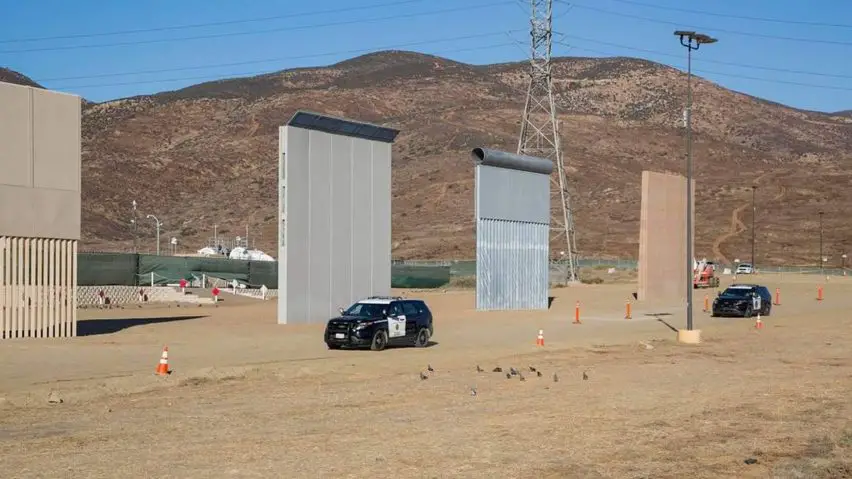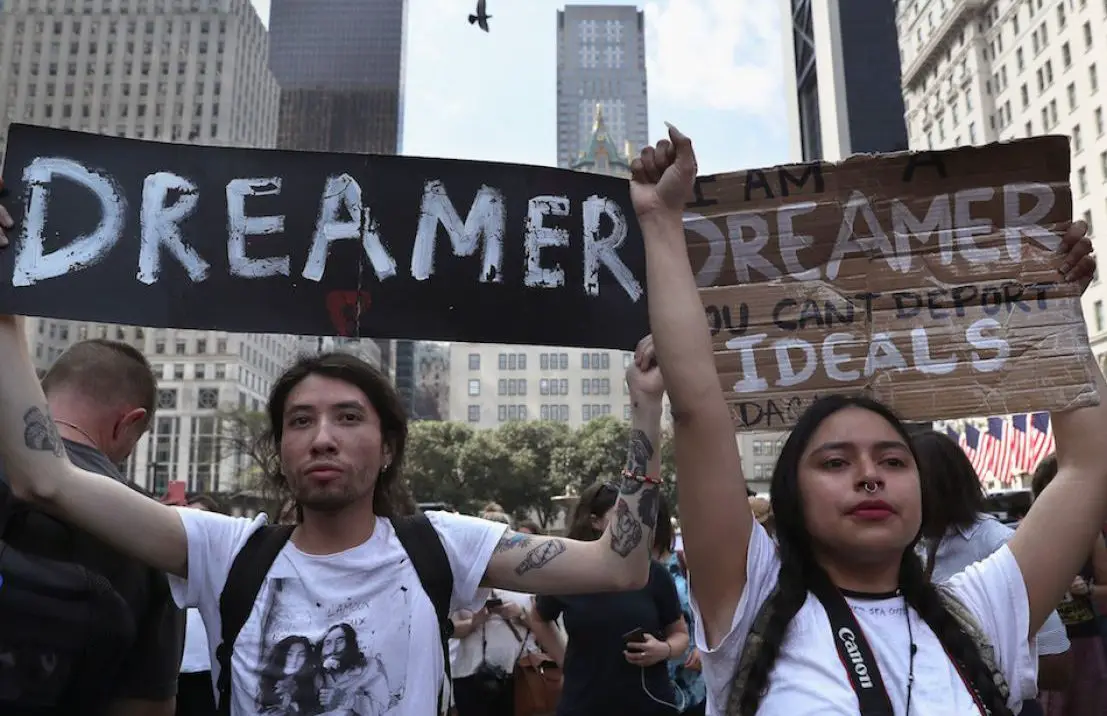The “American dream” has always been conveyed as America’s most enviable trait, but the truth is that citizens everywhere strive to improve their lives no matter which soil they were born on. Sometimes though, improving their situation in life means moving to a country that can offer more opportunities for success, which is why so many ambitious immigrants gravitate towards America.
In his State of the Union address last week, President Trump addressed the issue of immigration by unveiling what he called his “Four Pillars.” The plan, which the Trump administration asserts combines Republican and Democratic policies, aims to reform an immigration system that politicians on both sides of the aisle acknowledge being broken.
Despite its claims of bipartisanship, the four pillars still lean heavily towards a Republican perspective. Indeed, one of the pillars is Trump’s infamous call to build a wall between the U.S. and Mexico. Here, in detail, are the four pillars and a brief explanation of each one’s pros and cons.

First Pillar: A Path to Citizenship
With his first pillar, Trump has declared his desire to make naturalization more attainable for immigrants by allowing 1.8 million DREAMers a path to citizenship for a period of 12 years. In order to achieve citizenship, they must maintain two qualifications: be pursuing education or working, and exhibiting a good moral standing.
In doing so, despite the promise’s surface appeal, Trump’s declaration has left many DREAMers apprehensive about their future. Their unease comes not from what the president included in his plan, but rather what he failed to mention: the prognosis for the DACA program.
Several months ago, Trump announced that he was ending the Obama-era program that allowed for the children of illegal immigrants to pursue their education. He then put the blame for revising DACA on the Senate. So, while his proposal to offer a clearer path to citizenship sounds heartening, it does little to assuage the fears of the current DACA recipients whose future remains unclear.
For college students, both DREAMers and natural-born citizens alike, his pillars will affect those who do not have the resources and opportunity to fulfill these requirements. There has always been a substantial gap in racial groups that hold degrees, and with only 21 states offering undocumented immigrants in-state tuition, it seems unlikely a new path to citizenship will grant a vast majority of the 1.8 million a chance to achieve naturalization.
Although this pillar grants students an opportunity to legally reside in the U.S., it does not guarantee all of them the second chance that Trump believes the nation should provide.

Second Pillar: Secure the Border
Trump started his campaign back in June of 2015, claiming a wall between Mexico and the United States would aid in healing the nation. In his address, he pledged to have the wall built and to hire more ICE and border patrol to keep our communities safe. However, even though building the wall along the southern border intends to benefit the country, its long-term effects on higher education damage the nation’s education system as a whole.
Trump has never been discreet about his opinions on the morals of Mexican immigrants. “They are not our friend, believe me. They’re bringing drugs. They’re bringing crime. They’re rapists. And some, I assume, are good people.”
It is common for families along the southern border to bring their children into the U.S. in pursuit of giving them an opportunity at a brighter future, just as those within the DACA program. In 2016, Border Patrol agents had an 82 percent success rate in turning back those who planned on entering the country illegally.
Concrete along the southern border might seem like the solution to increase this percentage, but consequentially, institutions will end up losing millions of dollars due to a decrease in student enrollment.
A wall might have once driven Trump’s campaign, but with universities losing millions, it will have the people of America second-guessing as even the most competitive programs lose their edge.

Third Pillar: An End to the Visa Lottery
In addition to his four pillars, Trump plans to put an end to the visa lottery, a system that hands out 55,000 green cards a year, in hopes that this policy will reduce the number of non-contributing members of society. In comparison to his first pillar, the third pillar is no different: a merit-based solution.
The lottery system was first introduced in the Immigration Act of 1990 to diversify the country’s population in underrepresented ethnic groups. Fast forward 28 years, the system has successfully accomplished its goal and punched thousands of tickets. This gave countless individuals a chance of pursuing the American dream.
In regards to higher education, as a system that grants immigrants an opportunity to thrive within the states terminates, the diversity within college campuses will become heavily impacted. Just as the system has diversified the nation, institutions rely on various ethnic groups to enhance the learning environment of classrooms. Differences in beliefs, communication and learning styles add to the overall critical thinking skills a student develops throughout their education and cannot be learned in any lecture.
Although the system has been under scrutiny in recent months following the infamous terrorist attack in New York City, a merit-based system may decrease the odds of a tragedy like this from occurring again. Consequently, it will come at the cost of students having to sacrifice learning the skills needed to achieve success when they enter the workforce.

Fourth Pillar: Ending Chain Migration
In his final (and possibly his most controversial) fourth pillar, Trump introduced plans to put an end to the family reunification system, also known as the demonizing term of “chain migration.” This policy would eliminate all family ties undocumented immigrants have to their homeland, ensuring that the over four million people currently on the visa waiting list would decrease drastically.
Under this pillar, family reunification becomes near impossible. Currently, the system allows U.S. citizens the privilege to sponsor family members.
However, Trump’s claim that it allows them to bring in a “virtually an unlimited amount of distant relatives” is false. Sponsors have been limited to the specific relatives only, while the government sets a cap on the number of relatives admitted annually.
It will take years, if not decades, for a relative to be reunited with their family under this new pillar. Additionally, with Trump’s new policies, there is no telling how it will affect the visa waiting list.
There are millions of undocumented college students who have left their families in their home countries to pursue an education within the states. These students will soon begin to feel the harsh reality that the chances of being reunited with their loved ones will be slim to none.
Trump claims that his four pillars will heal a nation, but if these pillars become reality, it is only a matter of time before the communities and learning environments that contribute to the American dream are jeopardized. Leaving immigrants stripped of any chance to pursue the American dream will not fix the underlying issues of our nation.

















